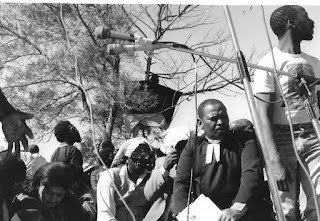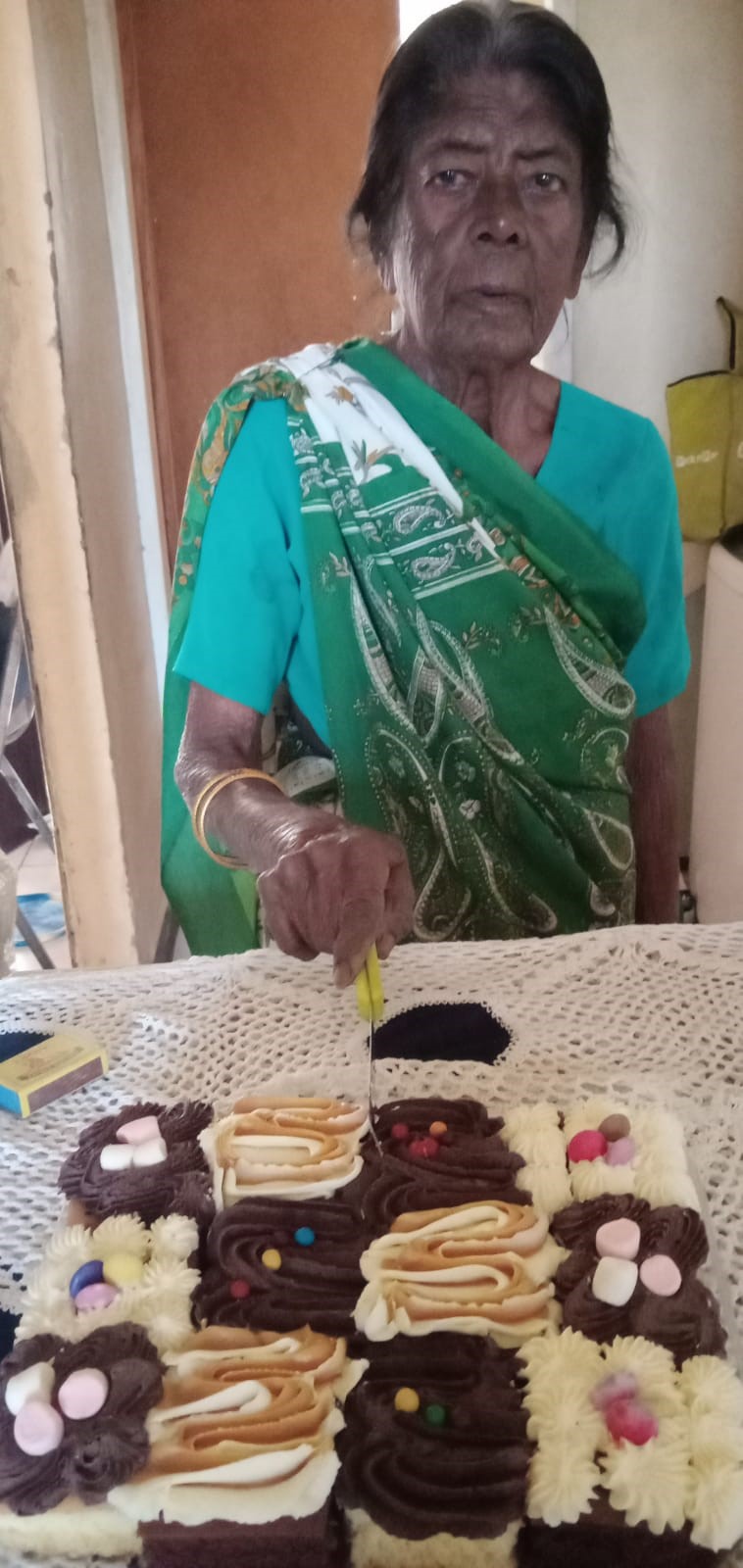REMEMBERING GRIFFITH MXENGE AND HIS WIFE,
MRS VICTORIA NONYAMEZELO MXENGE – WHO
WERE BOTH BRUTALLY MURDERED BY THE
APARTHEID POLICE IN DURBAN IN NOVEMBER 1981
AND AUGUST 1985 RESPECTIVELY
AUGUST 3 2024
INTRODUCTION:
On August 8 1985, the Press Trust of SA Third World News Agency, which
paid a heavy price for supplying the world with news and reports about the
struggles in South Africa at that time, published a lengthy article about the
life of political trials lawyer, Mrs Victoria Nonyamezelo Mxenge.
We at PTSA had written the profile only seven days after Mrs Mxenge
was brutally murdered in the driveway of her home in the Umlazi township in
Durban. She was stabbed and shot to death by four unknown assailants after she
got out of a car driven by the Reverend Mcebisi Xundu, who was the chairperson
of the United Democratic Front (UDF) in Natal at that time.
Her husband, political activist, political trials lawyer and former
Robben Island prisoner, Griffith Mxenge, was stabbed to death brutally more
than 40 times five years earlier in November 1981.
Her death raised suspicions that apartheid death squads were
cold-bloodedly culling the ranks of black activists in South Africa.
Mrs Mxenge, who was one of the defence attorneys in the trial in which
16 UDF leaders faced high treason charges, was the 40th black
activist to have been killed brutally or to have disappeared mysteriously since
the violence in the townships erupted once again in September 1984. After our
freedom in 1994, it was disclosed that apartheid security agents, led by Dirk
Coetzee, had been responsible for their brutal murders. Sadly, they were
granted amnesty by the Truth and Reconciliation Commission (TRC) after they
disclosed their roles in the murders of the Mxenges.
(Griffith and Victoria Mxenge)
This article, written as a tribute to Mrs Mxenge’s sacrifices and
dedication to the struggle, was supplied to news organisations and radio
stations around the world in August 1985. The article was based mainly on
interviews that this correspondent, Subry Govender, had conducted with her
after the brutal death of Griffith Mxenge in November 1981.
Subry Govender conducted the interviews with Mrs Mxenge under trying conditions because of the political repression of journalists and activists at that time. On the 39th anniversary of her demise, Govender writes that Mrs Mxenge’s life – especially her early years and when being married to Griffith Mxenge - was rich in history and should never be forgotten.
(Some activist members attending the funeral of Mrs Victoria Mxenge in the Eastern Cape in August 1985)
TEXT
----------------
When I spoke to Mrs Victoria Nonyamezelo Mxenge in 1982, she represented
the life of being a typical political widow who had been forced out of
circumstances to fill the roles of mother, father, breadwinner and even a political personality in the community.
Born on 1 January 1942 in
the little village of Tamara in the Eastern Cape region of South Africa, she grew up as a country girl with a sister
and two brothers who spent their young lives in carefree oblivion of the
political situation developing in the rest of the country.
As the second child of simple and humble parents who were
teachers, she began her education in the local village school where she was one
of the top pupils in her class. At the tender age of 12 she had to leave home
to attend secondary school at Beaufort West, also in the Eastern Cape. After
obtaining her matriculation certificate, she joined the Lovedale Hospital in
the university town of Alice to train as a nurse.
It was during her student days at the hospital that she came
into contact with the young and idealistic Griffith Mxenge who went to visit an
aunt in Tamara. The young couple became
friends after their first introduction.
She and Mr Mxenge, who was studying for his law degree at the
University of Fort Hare at this time, began dating and by the time he went to
Durban to complete his LLB (Bachelor of Law) degree at the University of Natal,
their romance had blossomed and they married in November 1964.
In 1965, Mrs Mxenge moved to Durban to join her husband and
enrolled at the King Edward V111 Hospital for a course in midwifery.
The young couple got their first taste of Pretoria’s political
repression against opponents of apartheid when in April 1966 Griffith was
detained by the then dreaded security police for 190 days. At the end of the
detention, he was charged under the Suppression of Communism Act and in
February 1967 was convicted for three years. Mr Mxenge served a part of his
sentence on Robben Island with leaders such as Nelson Mandela, Walter Sisulu,
Raymond Mahlaba, Govan Mbeki, Andrew Mlangeni and Ahmed Kathrada.
While Mr Mxenge was on the island, Mrs Mxenge gave birth to
their first child, Madasa.
Although life with a newly-born son and without work was
traumatic, she managed to make ends meet with the help of friends.
When Griffith Mxenge was released at the end of his three-year
term, he was served with a two-year banning order and prevented from continuing
with his studies at the University of Natal. Despite the pressures of security
police harassment and financial problems, Mr Mxenge completed his law degree with the help of a
lecturer in February 1968. And when his banning order expired at the end of
1971, he joined Natal Indian Congress official, Rabbi Bugwandeen’s law form as an articled
clerk. But the security police and the apartheid system did not leave him
alone. Just when he was about to complete his articles in 1973, he was slapped
with another banning order.
Although they had to put up with the accompanying difficulties
and problems, their marriage had thrived
and in December 1973 their second son, Viwe, was born. By this time, she had completed her midwifery course and joined
a clinic in Umlazi where she worked with a “wonderful white doctor”, Dr
Wolfgang Bordenstein.
“When I went for an interview, I told the doctor all about
Griff’s political activities but the good doctor accepted me without any
question.
“The matter, however, did not rest there. A few days after I started
work, the security police called on Dr Bordenstein and told him about my
background. But since he was already aware of my position, he treated me with
the greatest of respect.”
In 1975, her husband’s newly-established law practice was
booming and Mr Mxenge was finding it difficult to cope with the work-load. He
was looking for someone to assist him and soon found that he could not find a
better person than his wife.
After some cajoling on her part, Mr Mxenge employed her as his clerk. She immediately enrolled
with the University of South Africa to study law and by the end of 1979 had
passed all her subjects except for one – Afrikaans. With the assistance of a
friend, she passed Afrikaans in 1980 and in 1981 joined Griffith as a
fully-fledged lawyer in her own right.
But just when she and Mr Mxenge had earned the respect of the
entire black community as dedicated political trial lawyers, she was woken up
in the early hours of November 18 1981 and told her husband was found dead at
the local Umlazi stadium.
When discussing her husband’s death, Mrs Mxenge conceded that
she was very bitter.
“The perpetrators of the dastardly deed were not satisfied with
the taking of his life only but like the butchers they are, they savaged every
part of his body. Every vital organ in his body was savaged. His ears, stomach
and even his liver was ripped open,” she whispered and the pain was clearly
etched on her face.
(Freedom activists carrying the coffin containing the body of Mrs Victoria Mxenge during her funeral service in the Eastern Cape Town in August 1985.)
And as if the brutality inflicted on her husband was not enough,
she had to bear the further pain of seeing the confusion suffered by her
children, who could not understand why their father had been butchered in such
a manner.
“My six-year-old daughter wanted to know why her father, who was
so young had to die when her grandfather was still alive? “What could I tell
her? And my eldest son, who was in the middle of his Junior Certificate
examination, became a ‘zombie’ after he learnt of his father’s death. He was
completely unapproachable. He did not shed a tear but just drew into himself.
As his mother I could not even talk to him because I did not know what to say
to him. Yet he completed his examination and after writing his last paper, flew
with his father’s body from Durban to King William’s Town where the funeral
took place.”
In 1982, almost a year after Griffith death, Nonyameselo Mxenge
was picking up the pieces and building a new life for herself and her children
without her beloved husband. She and her children were going about their lives
in the full knowledge that Mr Mxenge had not died in vain – they were in fact
confident that freedom struggle would be won with a matter of a few years.
“One day – in the lifetime of my children and myself – we will
be free and independent.”
(Some anti-apartheid leaders at the funeral of Mrs Victoria Mxenge in the Eastern Cape in August 1985)
But, sadly she was not able to witness the arrival of freedom
and the installation of Nelson Mandela as the first democratic president after
the elections in April 1994. Like her husband, she too was brutally hacked to
death on August 1 1985.
It was a painful and sorrowful life and, one hopes that she and
her husband had not sacrificed their lives in vain. Their lives should become
part of our history and not forgotten in our new South Africa. I am sure both
Griffith and Victoria Mxenge must be deeply disappointed with the sad state of
affairs affecting our country today. They must be hoping that the social,
economical and political situation would be boosted to ensure “a better life”
for all South Africans. Ends – subrygovender@gmail.com August 3 2024









